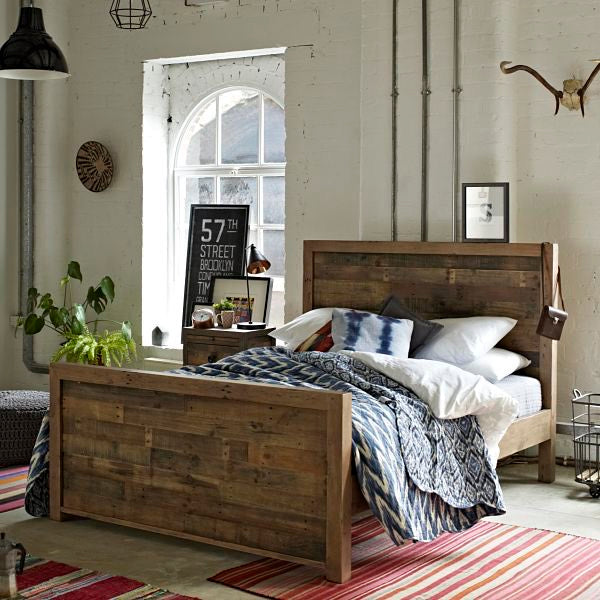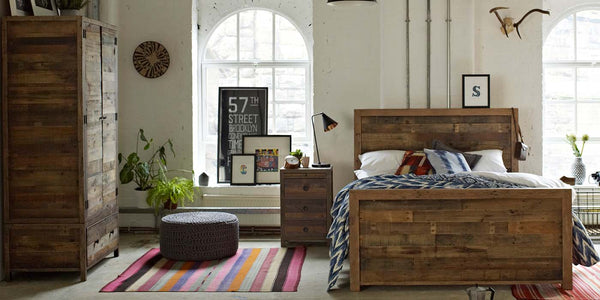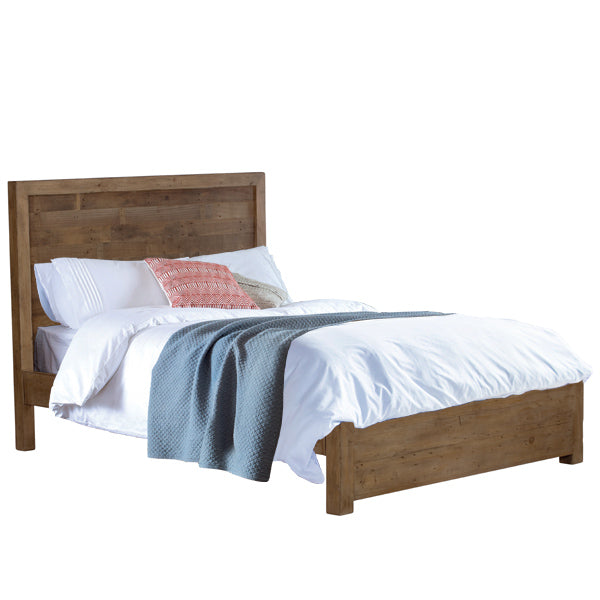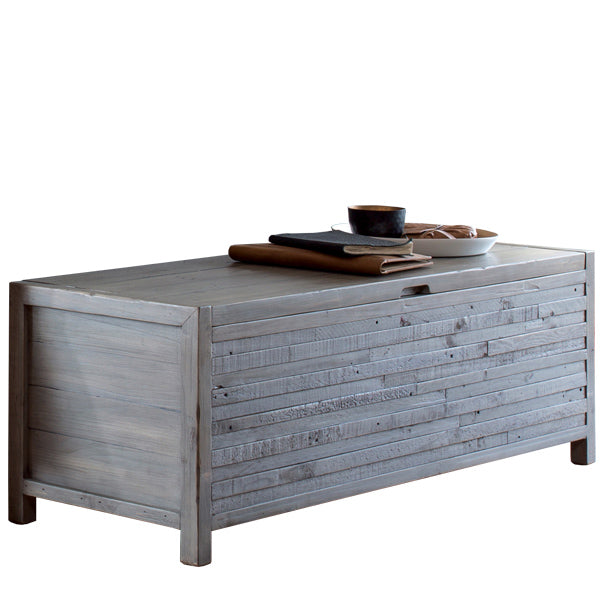

It is a conundrum as old as the hills, and so we decided to ask you, our discerning customers. We felt this was such an important but simple question: which would you opt for, the high footboard to your bed or a low footboard? Whether you’re looking for reclaimed wood furniture or not, this is an important choice….
We Asked, You Answered
There was a clear winner and it was… drum roll please!… the low footboard.
There were a few people who opted for a high footboard for their reclaimed furniture. And just because they are in the minority, doesn’t mean we should not discuss its pros and cons.
The high footboard bed

There is a pleasing sense of proportion about the high footboard bed, a staggering example of reclaimed bedroom furniture. For those who prefer it as an option, there is a feeling of being ‘safe’, cosseted and cocooned in its frame.
The duvet stays put, not draping to the floor and any throws that keep us snug and warm on cold, winter nights stay where they should too – on our feet!
The Standford high footboard bed is stunning but there is something we need to consider. It can’t be avoided but in the smaller bedroom, the high footboard may cloud the vision. It may look too big, too chunky, too imposing, too much.
But, every interior design decision is a personal one. If this is the look you want, then go for it.
The low footboard bed
The majority of pollsters opted for the low footboard bed for their wooden furniture. And we can understand why.

There is an openness to the low footboard that many people enjoy. And there are many pros to this style of bed;
- Dimension-friendly – a posh way of saying that the openness of the bed, like the Standford low footboard bed, is ideally suited to any size bedroom especially the boudoir where the dimensions are limited and bijou. In other words, if you have a smaller bedroom, the low-end bed doesn’t prevent the eye from falling across the entire room.
- Sits well with other items of bedroom furniture – when it comes to styling and dressing a room, some people feel that the high-end bed is too absolute. For example, adding a wooden blanket box at the end of a low-end bed gives it a boundary or a frame but is also a stylish addition to the bedroom (and a functional one too!)
- Frame it – in fact, for many people,a problem with having no footboard or a very low one is the way that the duvet seems to migrate to the floor and the fact that the openness of it feels too lax. From adding a wooden blanket box to a pretty upholstered ottoman, adding something to the foot of the bed forms a boundary. But it isn’t permanent and can be changed.

We need to consider the focal point of a bedroom too and it is, undoubtedly the bed. It is the main piece of furniture, coming second to nothing in the bedroom.
A high-end bed demands attention. It is the attention grabber, no matter style or colour it is. The low-end bed can struggle sometimes, to have the same impact.
It can blend into the background of the style in the room or you can draw attention to it. A focal point of a feature wall at the end of the bed draws attention and then the eye can lazily take in the rest of the bed.
Which is your choice?